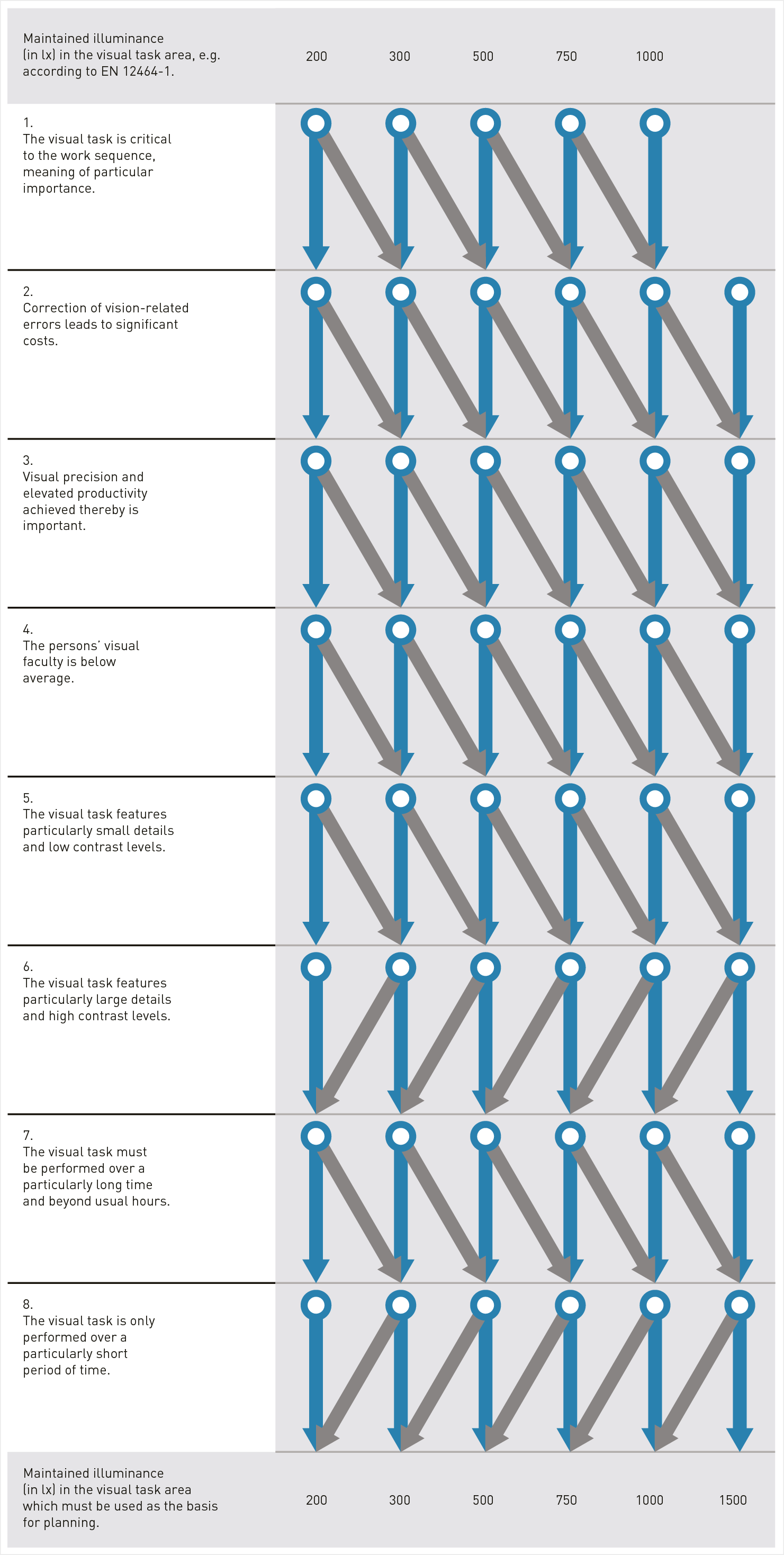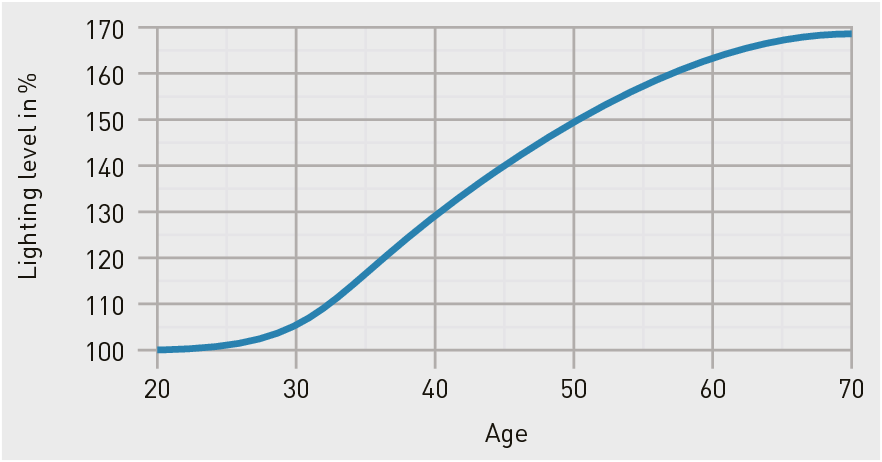1. Work that is particularly critical, meaning of particular importance for the work sequence, is work in toxicological laboratories or similar work places where dangerous substances are handled or which feature particular conditions regarding occupational health and safety or particularly high requirements to cleanliness and diligence, e.g. also in terms of the processed substances. Temporally synchronised activities can also be critical to the work sequence when they are not executed reliably and thus derail subsequent processes. Visual errors have significant consequences for people, production and the company.
Specific visual requirements (explanation of the matrix in figure 1.12)
2. Depending on the impact of visual and subsequently work errors, significant additional operational costs can arise. For example, when material defects in leather cutting are overlooked in spite of prior checks, and vision-related errors in preliminary manufacturing stages cause high costs in further processing steps. Also, errors in reading numbers may cause high costs if such misread numbers are entered into an EDP system, for example, and processed further with significant consequences.
3. Improved vision and improved visual focus results in improved performance characteristics. Where elevated productivity through increased visual precision is important, illuminance and other quality criteria for lighting must be improved.
4. Older people require elevated lighting levels. For example, a 50-year-old requires lighting levels elevated by 1,5 times compared with a 20-year-old, which means roughly one level of illuminance (see also fig.).
5. Visual details whose size is noticeably below the normal visual task or features particularly low contrast levels require higher levels of illuminance. Contrast levels worse than the normal visual tasks e.g. when reading patterns difficult to recognise, when working with one’s hands inside the gloved openings of special extraction booths; when working in rooms with vapour or fumes or when working with safety glasses.
6. Particularly large details or very high contrast levels of the visual task, on the other hand, allow for lower illuminance levels.
7. Work which must regularly be performed outside of normal (shift) working hours requires higher illuminance levels.
8. This includes visual tasks which must only be performed temporarily or for short periods, e.g. sporadic removal of goods from a storage facility in contrast to regular warehouse work. For rooms where the intended use is short-term only, this feature is already considered in the standardised illuminance levels, e.g. lavatories.

Figure 3.12: Matrix for determining maintained illuminance based on complicated or facilitated visual conditions.

Figure 3.13: Lighting level requirement depending on age